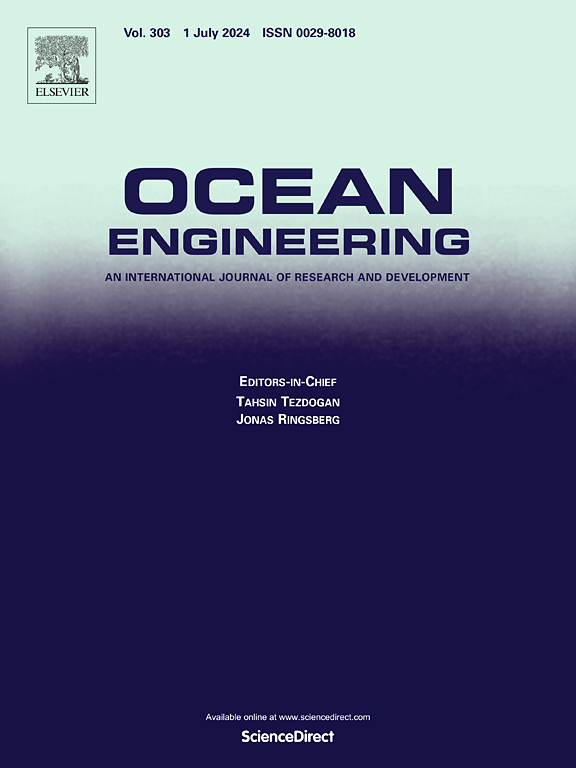Short-term motion prediction of FOWT based on time-frequency feature fusion LSTM combined with signal decomposition methods
IF 4.6
2区 工程技术
Q1 ENGINEERING, CIVIL
引用次数: 0
Abstract
The motion response of Floating Offshore Wind Turbine (FOWT) is a critical factor that significantly impacts the safety of offshore wind energy systems. Accurate prediction of these responses is essential for selecting appropriate operation and maintenance strategies. In order to improve the prediction accuracy, this study proposes an innovative time-frequency (TF) feature fusion algorithm and combines it with empirical mode decomposition (EMD), empirical wavelet transform (EWT), and long-short-term memory (LSTM) to develop a novel hybrid prediction model named EMD-EWT-TF-LSTM. Numerical data of platform motion response of a 15 MW FOWT under marine environmental loads are employed for model training and validation. The prediction performance of the TF-LSTM and EMD-TF-LSTM models developed based on the time-frequency feature fusion algorithm is compared with that of the traditional models (LSTM, EMD-LSTM), and the results show that the proposed algorithms can effectively improve the prediction accuracy. Furthermore, an improved EMD-EWT-TF-LSTM model is proposed to solve the problem of the overall prediction accuracy degradation due to the insufficient prediction performance of the high-frequency components in the EMD decomposition results. This study demonstrates that the proposed EMD-EWT-TF-LSTM model is effective for predicting the motion response of FOWT under various sea states. In comparison to the conventional EMD-LSTM model, the prediction accuracy of the EMD-EWT-TF-LSTM model has increased by 29.3% in normal sea conditions and 21.7% in extreme sea conditions.
求助全文
约1分钟内获得全文
求助全文
来源期刊

Ocean Engineering
工程技术-工程:大洋
CiteScore
7.30
自引率
34.00%
发文量
2379
审稿时长
8.1 months
期刊介绍:
Ocean Engineering provides a medium for the publication of original research and development work in the field of ocean engineering. Ocean Engineering seeks papers in the following topics.
 求助内容:
求助内容: 应助结果提醒方式:
应助结果提醒方式:


